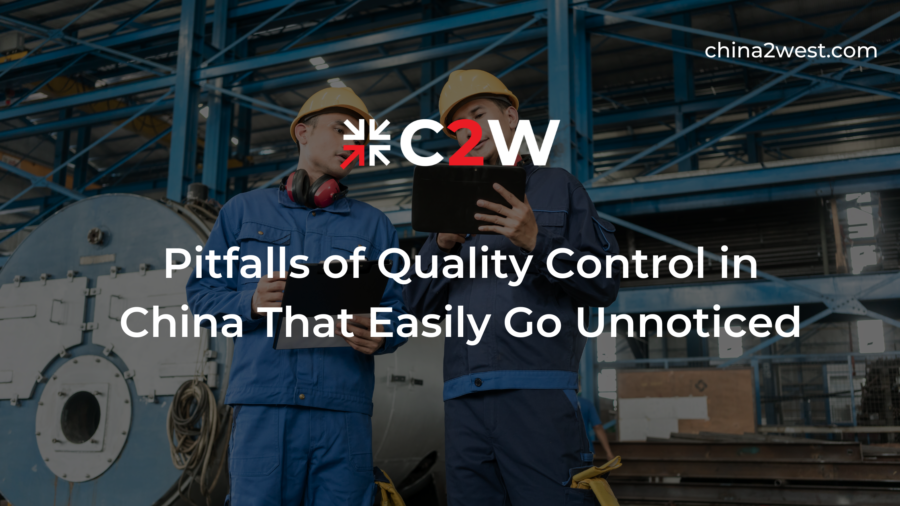Many businesses face unexpected quality control issues in China—hidden defects, material swaps, and unreliable suppliers. This guide exposes the most common mistakes and how to avoid them.
Quality control is a critical facet of manufacturing, ensuring that products consistently meet desired standards and specifications. With China’s rise as a global manufacturing hub, it’s important to recognize the potential challenges in quality control that often remain hidden.
In this article, we will delve deeper into the significant pitfalls of quality control in China, shedding light on these issues that businesses and consumers alike should be aware of.
The Cost-Cutting Conundrum
One of the primary drivers for companies choosing to manufacture in China is the promise of cost savings. China offers lower labor and production costs than many other countries.
While this advantage is undeniable, it can sometimes lead to a cost-cutting conundrum. Manufacturers may attempt to reduce expenses by compromising on essential quality control measures.
Lack of Standardization
A prominent challenge in Chinese manufacturing is the absence of standardized practices across industries. Quality standards can vary significantly from one factory to another, and sometimes even within the same industry.
This lack of consistency makes it challenging for businesses to maintain a uniform level of product quality.
For example, in the electronics industry, some factories might employ rigorous quality control measures, while others may be more lax. This variance can result in stark differences in the reliability and durability of electronic products manufactured in China.
Counterfeit Products
China has earned a reputation for producing counterfeit goods. Some unscrupulous manufacturers intentionally create knockoff products that closely imitate well-known brands.
These counterfeit products not only deceive consumers but also tarnish the reputation of legitimate businesses.
The impact of counterfeit products extends beyond the economic loss; it can pose serious safety risks in sectors like pharmaceuticals and automotive parts.
For instance, counterfeit pharmaceuticals may lack the necessary active ingredients or contain harmful substances, endangering the health of unsuspecting consumers.
Regulatory Challenges
Navigating China’s intricate regulatory landscape presents a significant challenge for businesses.
The regulatory environment is in a constant state of flux, demanding vigilance and adaptability for maintaining quality control.
Language Barrier
For foreign companies, the language barrier can prove to be a substantial hurdle. Understanding and adhering to Chinese regulations can be a formidable task, particularly when dealing with intricate technical specifications.
This language barrier may lead to misunderstandings or misinterpretations of regulatory requirements. Consequently, businesses might unintentionally overlook critical quality control measures, resulting in subpar products or regulatory violations.
Intellectual Property Concerns
Protecting intellectual property (IP) poses another significant challenge in China. Some manufacturers may disregard patents and intellectual property rights, leading to the unauthorized use of proprietary designs and technologies.
For instance, a foreign automaker may partner with a Chinese manufacturer to produce components, only to discover later that the manufacturer has replicated their designs and begun selling similar products to competitors.
This IP infringement not only affects the original company’s market share but also raises concerns about the quality of the imitated components.
Supply Chain Vulnerabilities
China’s extensive and intricate supply chain network can introduce vulnerabilities that affect quality control at various stages of production.
Raw Material Sourcing
The source of raw materials can have a substantial impact on product quality. Suppliers may not consistently provide materials that meet the required standards, leading to defects in the final product.
Consider the construction industry, where steel sourced from different suppliers might vary in terms of composition and strength. If a construction company unknowingly uses subpar steel in a building project, it could lead to structural vulnerabilities and safety concerns.
Transportation Challenges
China’s vast transportation network, while efficient, can sometimes present challenges. Shipping delays, improper handling during transit, or inadequate packaging can result in damage to products, thereby affecting their quality upon arrival.
In the food industry, for instance, perishable goods like fruits and vegetables are highly susceptible to damage during transportation. Failure to maintain proper temperature controls during transit can lead to spoilage, rendering the products unsuitable for sale.
Cultural Differences
Cultural nuances can play a significant role in quality control when doing business in China. Understanding Chinese business culture and etiquette is essential for effective communication and collaboration.
Hierarchical Structure
Chinese businesses often adhere to a hierarchical structure, which can influence decision-making and communication. Western companies may find it challenging to navigate this structure and convey their quality requirements effectively.
For instance, if a Western company wishes to address a quality issue with a Chinese manufacturer, they might encounter difficulties in bypassing middle management to reach the decision-makers who can implement necessary changes promptly.
Face-Saving Culture
The concept of “saving face” holds great importance in Chinese culture. This cultural nuance can sometimes lead to a reluctance in reporting quality issues or admitting mistakes, which can hinder effective quality control efforts.
In manufacturing, this reluctance to acknowledge problems might result in substandard products being shipped without necessary corrections or adjustments. This, in turn, can lead to recalls, reputation damage, and financial losses for businesses relying on Chinese manufacturing.
While China offers numerous advantages for manufacturing, such as cost savings and an extensive supply chain network, it is crucial to recognize the pitfalls of quality control that can easily go unnoticed.
Businesses that opt for manufacturing in China must proactively address these challenges through stringent quality control measures, clear communication, and a deep understanding of the regulatory environment and cultural dynamics. By doing so, they can effectively mitigate the risks associated with manufacturing in China and ensure that their products consistently meet the highest standards of quality and safety. Or you can choose to with an experienced Chinese manufacturer that helps you take care of all the above, easing you from the headache to focus on your business growth. Contact us now!
Looking for a complete guide on implementing quality control in China? Check out our step-by-step QC strategy guide.




